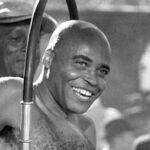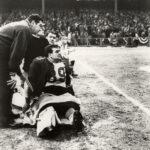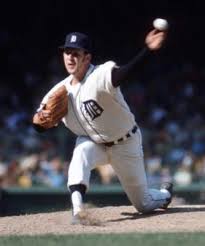Maria Sharapova: Answer to a Prayer?
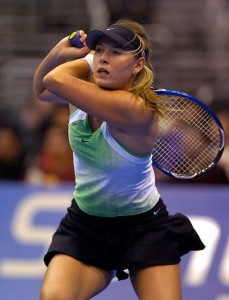
Is Maria Sharapova what the women's tennis game needs?
Tennis superstar Maria Sharapova is the perfect solution to the dilemma in the women’s game today. The tour has never stabilized since Justine Henin stepped down in May of 2008. Henin held the No. 1 ranking for a total of 117 weeks.
With Henin’s abrupt departure, Maria Sharapova assumed the No. 1 ranking for three weeks prior to the 2008 French Open; then Ana Ivanovic held it for nine weeks after winning the French Open for the first time.
Unfortunately, Ivanovic could not keep it and Jelena Jankovic captured it for one week; then, Ivanovic took back the No. 1 ranking for another three weeks, only to lose it when Serena Williams took over and held it for four weeks after winning the U.S. Open. Finally, Jelena Jankovic recaptured the No. 1 spot and held it for another 17 weeks.
After the 2009 Australian Open, Serena Williams held it again for 11 weeks until Dinara Safina took over the top spot on April 20, 2009. Safina has since been the No. 1 ranked player for 17 weeks and counting.
But no one is happy because Safina has not won a major and the No. 1 spot has moved around like a hot potato. Not one player possesses enough mental fortitude to grab the mantle and hold on to it—except perhaps the long-lost and long-legged Russian beauty, Sharapova.
Sharapova went out with a shoulder injury after the 2008 Wimbledon Championships. She returned full time to the tour just prior to the 2009 French Open where she did exceptionally well after being out for such an extended period.
During her absence Sharapova’s ranking dropped out of the top 100, falling as far as No. 126. Speculation began about her ability to return to action at all—further, that at age 22 her career might be over. Certainly a shoulder injury would weaken her serve—the essential piece of her game.
Sharapova, however, returned to singles play in May of 2009 at a clay court event—the Warsaw Open—where she lasted all the way to the quarterfinals.
Surprisingly, she reached the quarterfinals of the French Open a week later. Her ranking shot up to No. 60. It was a performance that made the tennis world sit up and take notice. Sharapova was back.
Following the French Open, Sharapova reached the semi-finals at the 2009 Aegon Classic in Birmingham—a grass court warm-up tournament in preparation for Wimbledon.
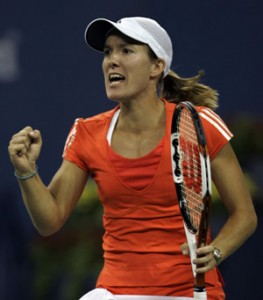
The women's tennis rankings have been unstable since the abrupt retirement of Justine Henin.
Although she lost in the second round at the 2009 Wimbledon Championships, this would remain only a hiccup during her reincarnation. Next up were the hard courts where Sharapova expected to make further inroads.
At the Bank of the West Classic in Stanford, Sharapova made it to the quarterfinals before losing to eventual finalist Venus Williams.
Competing in LA, Sharapova won her first round match against Jarmila Groth and in the second round took out the No. 3 seed Victoria Azarenka. In the semifinals she met Flavia Pennetta, losing the contest in three tough sets, while serving up 16 double faults. Her serve still fails her at times.
Her next tournament before the U.S. Open is the Roger’s Cup in Toronto where Sharapova has an opportunity to improve her ranking even more. The significant fact here is that Sharapova’s game is coming back to the place it was before her injury—back to the level she enjoyed as the former world No. 1.
Since Henin’s retirement—besides bouncing the No. 1 ranking around like a basketball during a warm up drill—the majors have been dominated by the Williams sisters except for the French Open—which Ivanovic won in 2008 and Svetlana Kuznetsova won in 2009.
While Venus Williams has won a few WTA tournaments, Serena has not managed a non-major win since Henin’s retirement. This explains her inability to capture the No. 1 ranking. Her MIA approach will not usher her into that top spot.
During this same period newcomers Vera Zvonareva, Victoria Azarenka, and Caroline Wozniacki have risen to the top while former newcomers Ana Ivanovic and Jelena Jankovic suffer in a Serbian slump.
In LA rising stars Zvonareva, Azarenka, and Wozniacki as well as No. 1 seed Safina were unceremoniously ousted from the tournament. The Williams sisters (surprise!) are not playing this week. Who is left at the end of the week but Maria Sharapova!
She is the answer to the WTA’s prayers because she has won three majors on every surface except clay. Sharapova won her first major at Wimbledon in 2004 defeating Serena Williams in straight sets, 6-1, 6-4.
Her second major came at the U.S. Open in 2006 with Sharapova upending Justine Henin, 6-4, 6-4. Finally Sharapova won her third major in Australia in 2008 when she outplayed the Serb Ivanovic, 7-5, 6-3.
Sharapova has desire, tenacity and mental fortitude. She expects to win when she takes the court. As a proven commodity on tour Sharapova will accept, hold on to and fight to keep the No. 1 mantle.
Once she climbs to the top and assumes the crown, the press will stop harping about the injustice of the ranking system and order will once again reign over women’s tennis. After 16 months, peace will be welcomed.
An Aside
Don’t expect much out of the return of Kim Clijsters to the women’s tour. If we had shallow expectations regarding Sharapova’s return to form after her shoulder injury and almost one-year layoff, imagine the task facing Clijsters?
All you have to do is recall the short-lived return of Lindsay Davenport last year. Don’t expect Clijsters to be relevant in the short-term or even the long-term.
JA Allen is a regular contributor for Sports Then and Now.
